Roshan Sumbaly
Jack
Movie Gen: A Cast of Media Foundation Models
Oct 17, 2024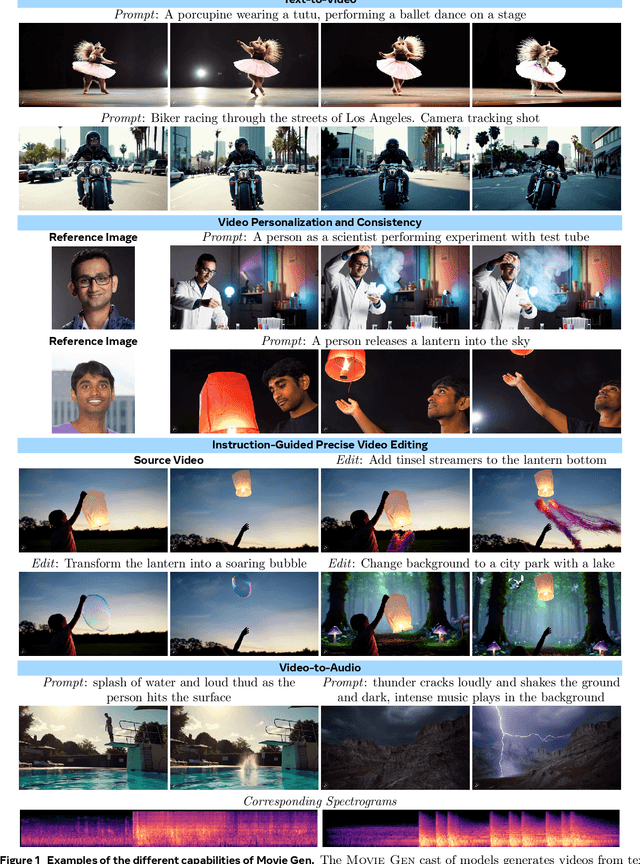

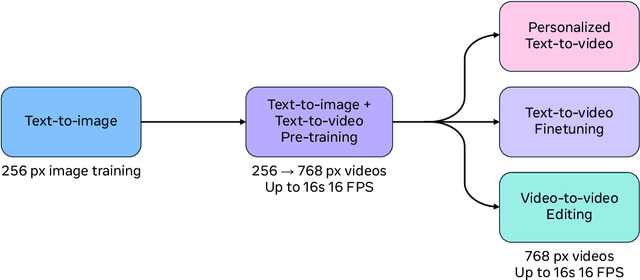
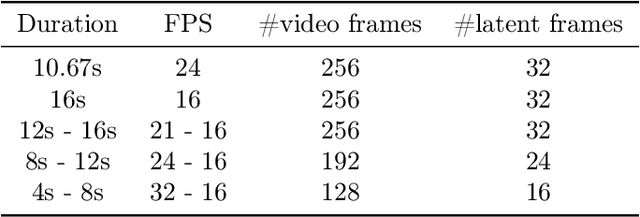
Abstract:We present Movie Gen, a cast of foundation models that generates high-quality, 1080p HD videos with different aspect ratios and synchronized audio. We also show additional capabilities such as precise instruction-based video editing and generation of personalized videos based on a user's image. Our models set a new state-of-the-art on multiple tasks: text-to-video synthesis, video personalization, video editing, video-to-audio generation, and text-to-audio generation. Our largest video generation model is a 30B parameter transformer trained with a maximum context length of 73K video tokens, corresponding to a generated video of 16 seconds at 16 frames-per-second. We show multiple technical innovations and simplifications on the architecture, latent spaces, training objectives and recipes, data curation, evaluation protocols, parallelization techniques, and inference optimizations that allow us to reap the benefits of scaling pre-training data, model size, and training compute for training large scale media generation models. We hope this paper helps the research community to accelerate progress and innovation in media generation models. All videos from this paper are available at https://go.fb.me/MovieGenResearchVideos.
The Llama 3 Herd of Models
Jul 31, 2024Abstract:Modern artificial intelligence (AI) systems are powered by foundation models. This paper presents a new set of foundation models, called Llama 3. It is a herd of language models that natively support multilinguality, coding, reasoning, and tool usage. Our largest model is a dense Transformer with 405B parameters and a context window of up to 128K tokens. This paper presents an extensive empirical evaluation of Llama 3. We find that Llama 3 delivers comparable quality to leading language models such as GPT-4 on a plethora of tasks. We publicly release Llama 3, including pre-trained and post-trained versions of the 405B parameter language model and our Llama Guard 3 model for input and output safety. The paper also presents the results of experiments in which we integrate image, video, and speech capabilities into Llama 3 via a compositional approach. We observe this approach performs competitively with the state-of-the-art on image, video, and speech recognition tasks. The resulting models are not yet being broadly released as they are still under development.
Imagine Flash: Accelerating Emu Diffusion Models with Backward Distillation
May 08, 2024Abstract:Diffusion models are a powerful generative framework, but come with expensive inference. Existing acceleration methods often compromise image quality or fail under complex conditioning when operating in an extremely low-step regime. In this work, we propose a novel distillation framework tailored to enable high-fidelity, diverse sample generation using just one to three steps. Our approach comprises three key components: (i) Backward Distillation, which mitigates training-inference discrepancies by calibrating the student on its own backward trajectory; (ii) Shifted Reconstruction Loss that dynamically adapts knowledge transfer based on the current time step; and (iii) Noise Correction, an inference-time technique that enhances sample quality by addressing singularities in noise prediction. Through extensive experiments, we demonstrate that our method outperforms existing competitors in quantitative metrics and human evaluations. Remarkably, it achieves performance comparable to the teacher model using only three denoising steps, enabling efficient high-quality generation.
Emu: Enhancing Image Generation Models Using Photogenic Needles in a Haystack
Sep 27, 2023



Abstract:Training text-to-image models with web scale image-text pairs enables the generation of a wide range of visual concepts from text. However, these pre-trained models often face challenges when it comes to generating highly aesthetic images. This creates the need for aesthetic alignment post pre-training. In this paper, we propose quality-tuning to effectively guide a pre-trained model to exclusively generate highly visually appealing images, while maintaining generality across visual concepts. Our key insight is that supervised fine-tuning with a set of surprisingly small but extremely visually appealing images can significantly improve the generation quality. We pre-train a latent diffusion model on $1.1$ billion image-text pairs and fine-tune it with only a few thousand carefully selected high-quality images. The resulting model, Emu, achieves a win rate of $82.9\%$ compared with its pre-trained only counterpart. Compared to the state-of-the-art SDXLv1.0, Emu is preferred $68.4\%$ and $71.3\%$ of the time on visual appeal on the standard PartiPrompts and our Open User Input benchmark based on the real-world usage of text-to-image models. In addition, we show that quality-tuning is a generic approach that is also effective for other architectures, including pixel diffusion and masked generative transformer models.
EgoObjects: A Large-Scale Egocentric Dataset for Fine-Grained Object Understanding
Sep 15, 2023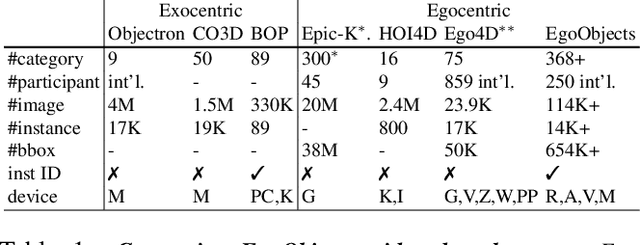


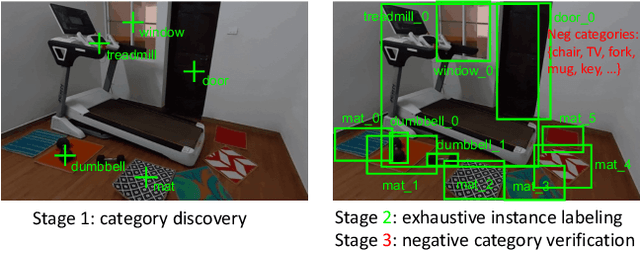
Abstract:Object understanding in egocentric visual data is arguably a fundamental research topic in egocentric vision. However, existing object datasets are either non-egocentric or have limitations in object categories, visual content, and annotation granularities. In this work, we introduce EgoObjects, a large-scale egocentric dataset for fine-grained object understanding. Its Pilot version contains over 9K videos collected by 250 participants from 50+ countries using 4 wearable devices, and over 650K object annotations from 368 object categories. Unlike prior datasets containing only object category labels, EgoObjects also annotates each object with an instance-level identifier, and includes over 14K unique object instances. EgoObjects was designed to capture the same object under diverse background complexities, surrounding objects, distance, lighting and camera motion. In parallel to the data collection, we conducted data annotation by developing a multi-stage federated annotation process to accommodate the growing nature of the dataset. To bootstrap the research on EgoObjects, we present a suite of 4 benchmark tasks around the egocentric object understanding, including a novel instance level- and the classical category level object detection. Moreover, we also introduce 2 novel continual learning object detection tasks. The dataset and API are available at https://github.com/facebookresearch/EgoObjects.
3rd Continual Learning Workshop Challenge on Egocentric Category and Instance Level Object Understanding
Dec 13, 2022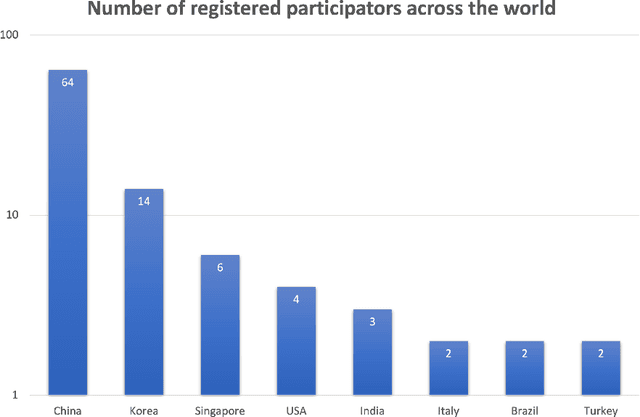

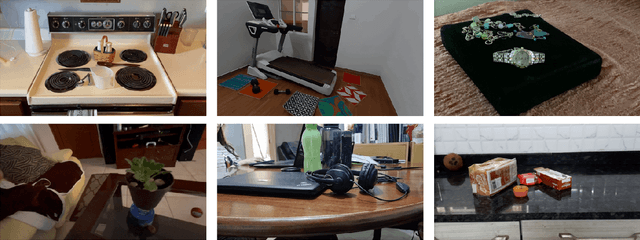

Abstract:Continual Learning, also known as Lifelong or Incremental Learning, has recently gained renewed interest among the Artificial Intelligence research community. Recent research efforts have quickly led to the design of novel algorithms able to reduce the impact of the catastrophic forgetting phenomenon in deep neural networks. Due to this surge of interest in the field, many competitions have been held in recent years, as they are an excellent opportunity to stimulate research in promising directions. This paper summarizes the ideas, design choices, rules, and results of the challenge held at the 3rd Continual Learning in Computer Vision (CLVision) Workshop at CVPR 2022. The focus of this competition is the complex continual object detection task, which is still underexplored in literature compared to classification tasks. The challenge is based on the challenge version of the novel EgoObjects dataset, a large-scale egocentric object dataset explicitly designed to benchmark continual learning algorithms for egocentric category-/instance-level object understanding, which covers more than 1k unique main objects and 250+ categories in around 100k video frames.
Similarity Search for Efficient Active Learning and Search of Rare Concepts
Jun 30, 2020
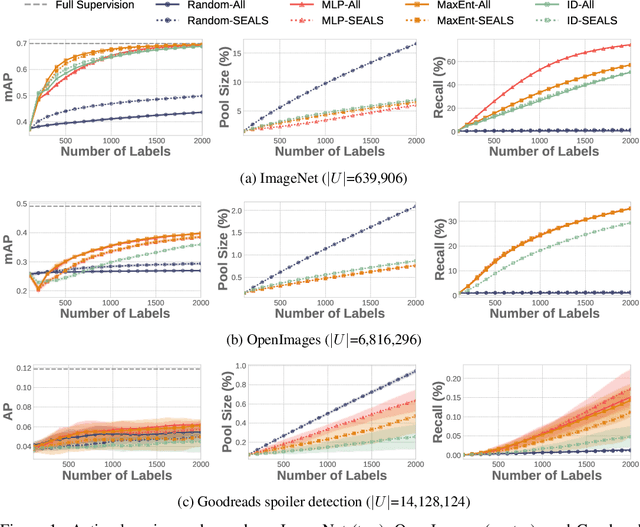


Abstract:Many active learning and search approaches are intractable for industrial settings with billions of unlabeled examples. Existing approaches, such as uncertainty sampling or information density, search globally for the optimal examples to label, scaling linearly or even quadratically with the unlabeled data. However, in practice, data is often heavily skewed; only a small fraction of collected data will be relevant for a given learning task. For example, when identifying rare classes, detecting malicious content, or debugging model performance, the ratio of positive to negative examples can be 1 to 1,000 or more. In this work, we exploit this skew in large training datasets to reduce the number of unlabeled examples considered in each selection round by only looking at the nearest neighbors to the labeled examples. Empirically, we observe that learned representations effectively cluster unseen concepts, making active learning very effective and substantially reducing the number of viable unlabeled examples. We evaluate several active learning and search techniques in this setting on three large-scale datasets: ImageNet, Goodreads spoiler detection, and OpenImages. For rare classes, active learning methods need as little as 0.31% of the labeled data to match the average precision of full supervision. By limiting active learning methods to only consider the immediate neighbors of the labeled data as candidates for labeling, we need only process as little as 1% of the unlabeled data while achieving similar reductions in labeling costs as the traditional global approach. This process of expanding the candidate pool with the nearest neighbors of the labeled set can be done efficiently and reduces the computational complexity of selection by orders of magnitude.
 Add to Chrome
Add to Chrome Add to Firefox
Add to Firefox Add to Edge
Add to Edge